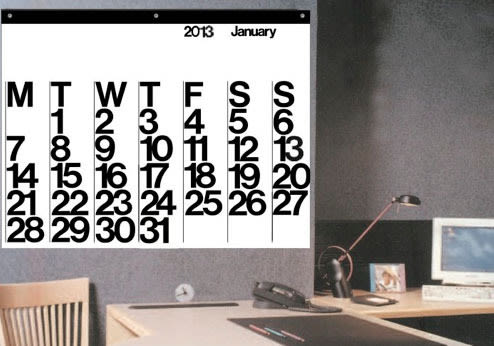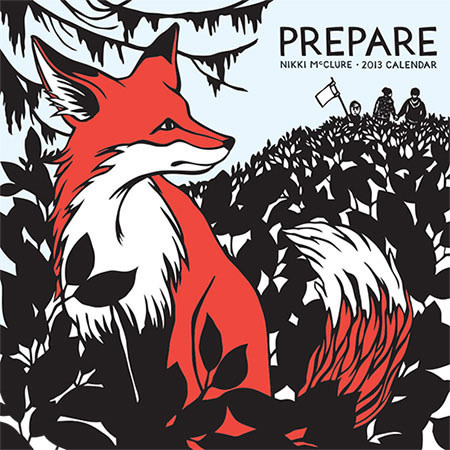Time Passages

Image: Courtesy of Stendig
Digital technology is terrific, and I love my handheld digital device and its cloud-based calendar and all that super cyber stuff, but there is still something to be said for the basic utility and practicality of the old-fashioned, paper-based desk or wall calendar. Wall and desk calendars have character, and they can brighten your day in a way that a screen-based organizer can't.

Olympia artist Nikki McClure "draws" her images by cutting a single sheet of paper with an X-acto knife.
Image: Courtesy of Nikki McClure
Here are three decidedly non-digital, paper-based calendars that are such classic designs that for some people, starting a new one is an annual tradition. Style and design are part of the appeal of a wall or desk calendar, and these three span the spectrum from sleek Italian modernism to Berkeley radical anti-capitalist chaos. They are calendars that don't just say what you're doing that day, they say something about you.
The Stendig wall calendar is the granddaddy of style-statement-through-calendar-choice, and the longtime favorite of architects. Its spare, black and white, Helvetica-font-based design and oversize scale (it measures 3' by 4') are suitable for sophisticated office walls everywhere. Massimo Vignelli designed the Stendig calendar in 1966, and it's been iconic ever since. And at about $40, it's an inexpensive way to have something from the Museum of Modern Art in your own collection.
Vignelli is also well known for his New York City subway map of 1972, which rebranded the transit system when the city was having hard times, and landed in the Museum of Modern Art.
At the opposite end of the style spectrum is the Slingshot "radical planner calendar." This is the nineteenth year of production for the calendar from the Berkeley, CA collective called the Long Haul. They put out the free Slingshot newspaper, itself founded in the 'zine era of 1988, and the pocket sized weekly diary is an offshoot. A boyfriend/girlfriend couple from the collective began it by putting together 400 copies of photocopied, 8 1/2 x 11 sheets, cut in half, hand-collated and rubber band-bound. By 2002 the Slingshot had grown up to a bound book and sold 10,000 copies. You can find them online (including Buy Olympia) or at local co-ops, at Land (the gallery/retail shop on North Mississippi) and at In Other Words, the feminist bookshop on North Killingsworth that Portlandia has filmed at (and spoofed).
The Slingshot calendar is old skool ‘zine style design, hand-drawn and a little ugly in a rough and tumble, unpretentious way. I have a feeling Massimo Vignelli wouldn’t be caught dead with one. Our third classic calendar creator probably appreciates the Slingshot's 'zine design, though. Nikki McClure is an Olympia-based paper artist whose annual calendars are synonomous with Olympia's DIY culture and lo-fi and punk music scene flourishing from the '90s on.
McClure's "drawings" are actually paper cuts; instead of a pencil, she uses an X-acto knife to cut a piece of paper into a figure-ground black/white image. (Of course, she does work from photos and sketches before she brings blade to paper.) Land carries her calendars (and is also the physical headquarters for the Buy Olympia website), as do Reading Frenzy, Powell's, New Seasons and a slew of other local shops.




